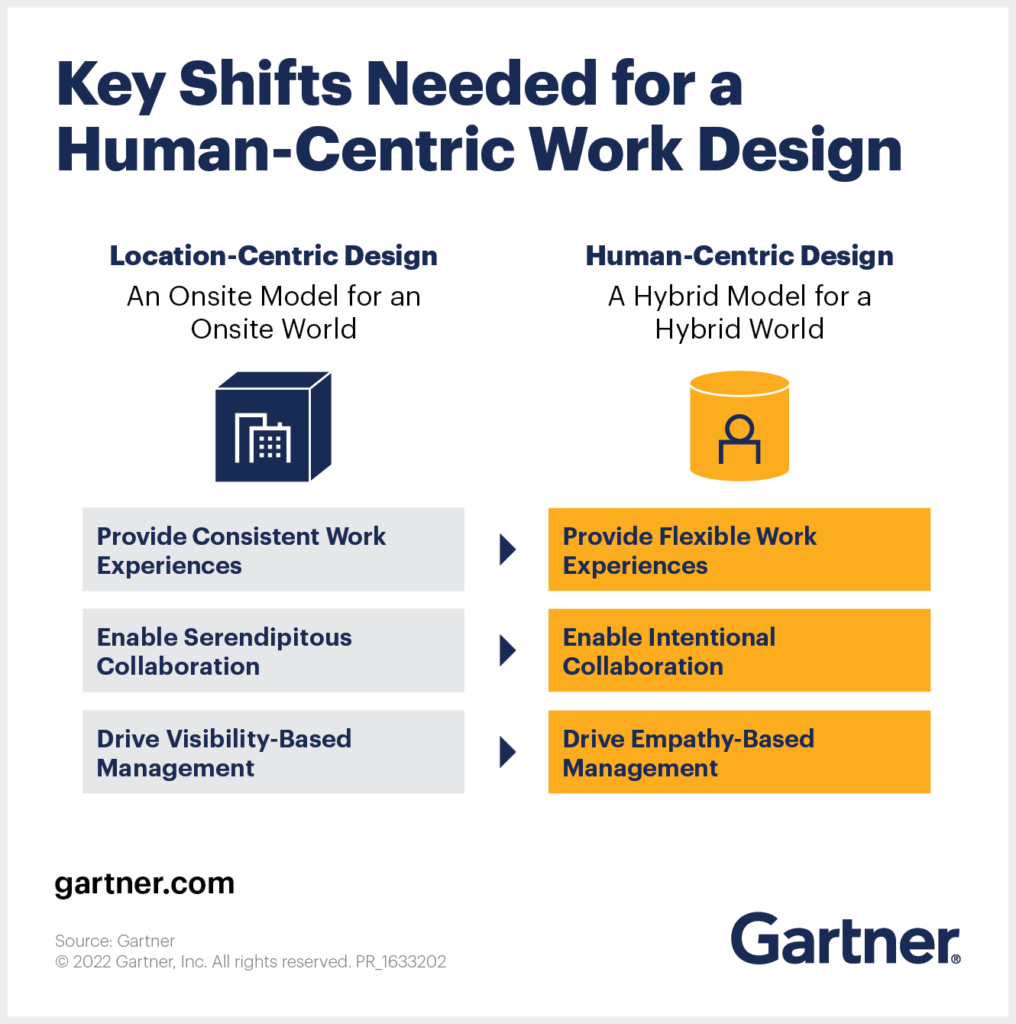The 2021 Gartner Future of Supply Chain noted that 61% of supply chain leaders believe that the acceleration of remote work due to the pandemic will create a permanent hybrid work model, even at the frontline.

“In an environment of talent and labour shortage, supply chain leaders anticipate employee expectations to become more demanding and feel that they must prepare to meet those expectations – or lose to competitors that do,” said Suzie Petrusic, director of research with the Gartner Supply Chain practice.
She noted that 57% of respondents believe that those intensified employee expectations will also increase the costs of attracting, hiring and retaining talent.
To remain competitive, supply chain leaders should transform their organisation from a location-centric to a human-centric work design. This means making three strategic changes (see Figure 1).

Source: Gartner (February 2022)
Providing flexible work experiences for frontline workers
While organisations have learned a lot about hybrid work throughout the pandemic, those lessons rarely apply to operational and frontline staff – employees whose tasks require them to show up physically.
The supply chain has a deep dependency on the stability of the schedules of these frontline workers. This stems from a history of finding talent willing to adjust to the supply chain’s scheduling needs. This is not the case anymore, and the supply chains that achieve flexibility at the frontline will win the talent competition of the future.
“Supply chain leaders have two levers here. They can invest in technology to reduce their reliance on humans for frontline operational execution, where work is most inflexible, and they can find ways to increase frontline worker flexibility,” Petrusic said.
She observed that only a small number of survey respondents are currently taking the technology route. However, 56% say that they are investing to design work primarily for flexibility.
As a result of those investments, the supply chain of the future will be marked by flexible workspaces and work schedules, such as part-time shifts and the possibility for employees to schedule and trade their own shifts.
A smaller portion of that future supply chain will enable flexibility through technology, for example, through augmented and virtual reality or exoskeletons.
Enable intentional collaboration
Supply chain leaders have already begun to enable collaboration more intentionally. For example, 62% of respondents are currently investing in providing policy and communication tools for seamless in-person and remote work relationships.
The supply chain of the future will be characterized by agile workspaces, the collaboration between remote and in-person employees, and collaboration-based training and upskilling programs.
Drive empathy-based management
Supply chain leaders have realized that they must hold themselves – and their managers – accountable for diversity, equity and inclusion (DEI) and employee well-being, including protection against discrimination.
Around three-quarters of respondents are investing to enforce equitable employment practices and provide employees with meaningful, purpose-driven initiatives in their work.
“With shifting employment models already being explored, supply chain leaders will want to ensure they can drive empathy for these non-traditional employees. They’ll need the proper organisational structure to do so, including focused leadership roles, such as directors of remote work or robotics,” Petrusic concluded.





